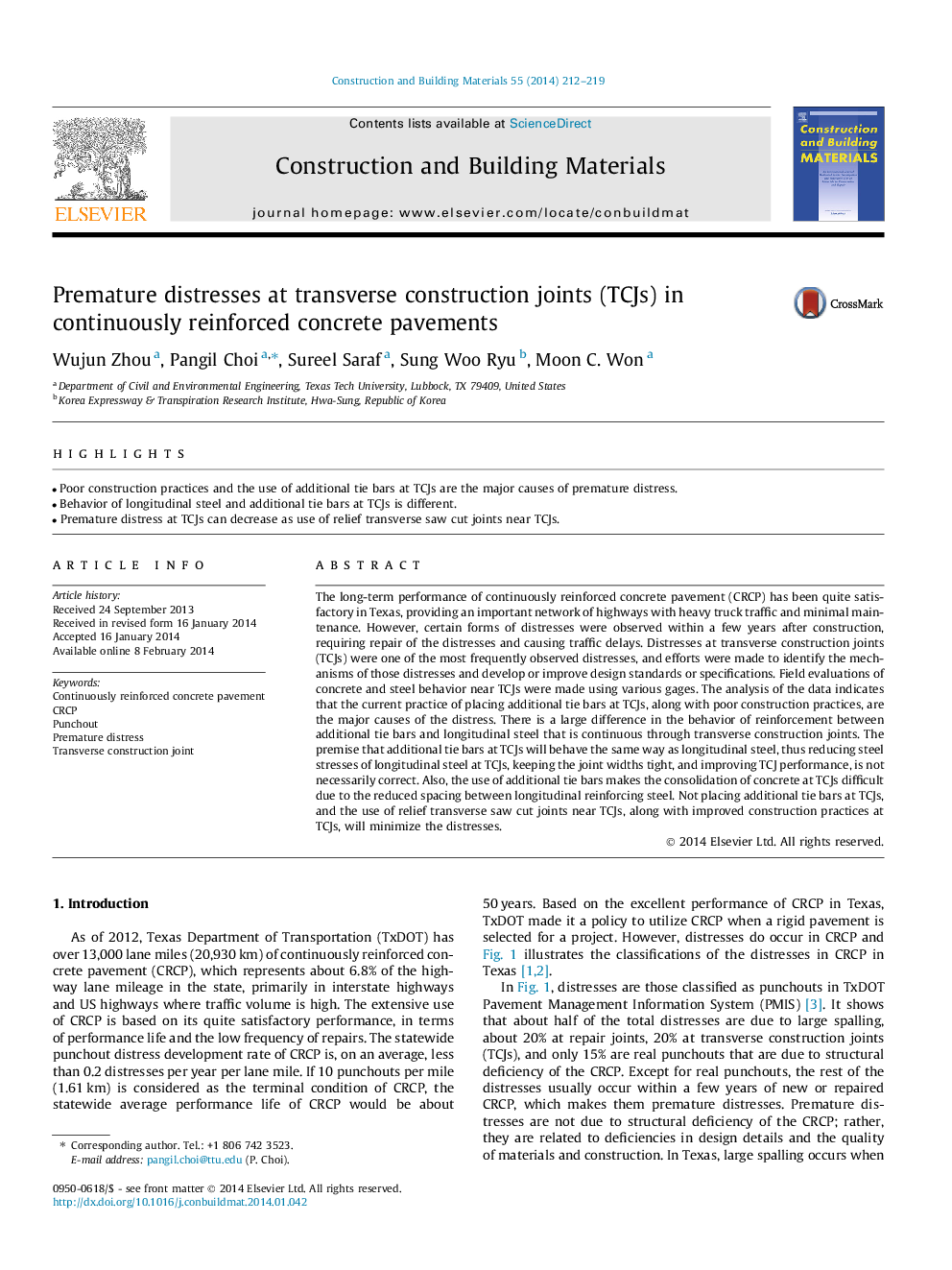| کد مقاله | کد نشریه | سال انتشار | مقاله انگلیسی | نسخه تمام متن |
|---|---|---|---|---|
| 257824 | 503601 | 2014 | 8 صفحه PDF | دانلود رایگان |

• Poor construction practices and the use of additional tie bars at TCJs are the major causes of premature distress.
• Behavior of longitudinal steel and additional tie bars at TCJs is different.
• Premature distress at TCJs can decrease as use of relief transverse saw cut joints near TCJs.
The long-term performance of continuously reinforced concrete pavement (CRCP) has been quite satisfactory in Texas, providing an important network of highways with heavy truck traffic and minimal maintenance. However, certain forms of distresses were observed within a few years after construction, requiring repair of the distresses and causing traffic delays. Distresses at transverse construction joints (TCJs) were one of the most frequently observed distresses, and efforts were made to identify the mechanisms of those distresses and develop or improve design standards or specifications. Field evaluations of concrete and steel behavior near TCJs were made using various gages. The analysis of the data indicates that the current practice of placing additional tie bars at TCJs, along with poor construction practices, are the major causes of the distress. There is a large difference in the behavior of reinforcement between additional tie bars and longitudinal steel that is continuous through transverse construction joints. The premise that additional tie bars at TCJs will behave the same way as longitudinal steel, thus reducing steel stresses of longitudinal steel at TCJs, keeping the joint widths tight, and improving TCJ performance, is not necessarily correct. Also, the use of additional tie bars makes the consolidation of concrete at TCJs difficult due to the reduced spacing between longitudinal reinforcing steel. Not placing additional tie bars at TCJs, and the use of relief transverse saw cut joints near TCJs, along with improved construction practices at TCJs, will minimize the distresses.
Journal: Construction and Building Materials - Volume 55, 31 March 2014, Pages 212–219